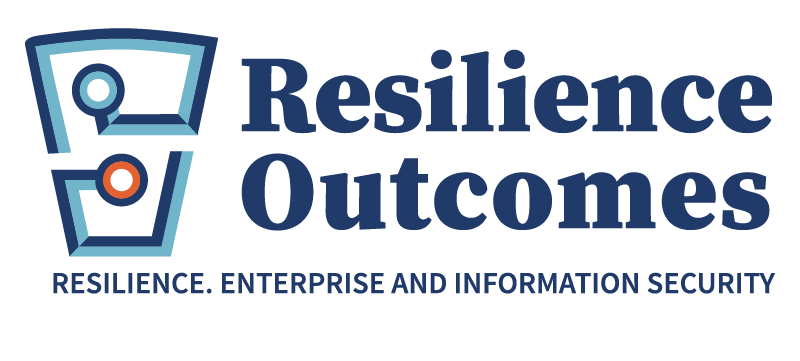I was asked to give a snapshot about what I thought the big risks for organisations were likely to be in the cyber world in 2013. Below are eight trends that I think are more likely than not to be important in the next twelve months.
1 Boards continue to struggle to consider cyber risks in a holistic manner
With the exception of technology based companies, most government and private sector boards lack directors with a good understanding of their cyber risks. However all organisations are becoming more dependent on electronic information and commerce. This brings with it both opportunities and threats which are not well understood by boards. Good risk management depends on the board setting the risk tolerance for the organisation. Risk and reward are two sides of the same coin.
Senior Management must create a culture where they acknowledge that cyber risk is evolving and encourage sharing of incident information with trusted partners in government, police, industry and with their service providers. Moreover, if boards see problems in sharing information, they should lobby governments to improve the conditions for sharing.
2 BYOD goes ballistic – deperimeterisation is forced upon organisations, even when they aren’t ready.
Many organisations are in denial about the threat that ‘bring your own device’ (BYOD) policies make them bear. Together BYOD and Cloud technologies will force deperimeterisation on organisations. The pressure will come from primarily within as their profit centres demand more connectivity to develop new and rapidly changing business relationships.
In the long-term, this is likely to be positive because it will drive down costs and increase flexibility for organisations. But only the resilient will survive the transition. Even resilient organisations will not go through this deperimeterisation unchanged. This process is likely to cause rude shocks for those organisations and their boards that are not prepared and do not invest prudently in technology and more importantly people to transition smoothly.
3 Attacks that intentionally destroy data
The other threat which may arise is where the attacker intentionally destroys data, usually after stealing it. This may be as an act of protest by an issue motivated group, the opposite of Wikileaks if you think of it. Or, it could be undertaken by organised crime against either government agencies or business. Attacks of this nature could cripple many organisations that do not have hot-backup, even then the question of data integrity comes into play. Boards will need to think carefully about the ‘three cornered stool’ of confidentiality, integrity and availability’ relative to their organisations.
Ransomware, where data is encrypted by an attacker to become inaccessible to the owner until a ransom is paid will increase. However, the problem is likely to remain primarily at the home user and SME level. This is less due to technical difficulties with the attacks and more because of the standard problem for such scams – how to extract money when the authorities have been alerted and are on the hunt. Technologies such as Bitcoin will find increasing use here.
4 More sophisticated attacks by organised crime and nation states.
Here’s an easy one. I am more certain of this prediction than any of the others. We are in a cyber arms race between the attackers and the defenders. The advantage currently lies with the attackers. Since the possibility of an international agreement to curb cyberattacks is negligible as per my cyber law of the sea post, I see no let up in 2013.
5 Privacy continues to increase as a concern for governments in most western countries
In Australia, the Parliament passed the Privacy Amendment (Enhancing Privacy Protection) Bill 2012 in November, tightening the Commonwealth Privacy Act 1988, which applies to Commonwealth agencies and private sector organisations. A summary of the changes are here.
In the same month, the European Network and Information Security Agency (ENISA) published a report about the right to be forgotten. This report proposes a regulation that would allow a European citizen to have their personal data destroyed on request unless there were legitimate grounds for retention.
Large multinationals, like Facebook are going to continue to face scrutiny by privacy advocates and governments around the world about the data that they collect and mine. The new version of Microsoft Internet Explorer set a cat among the pigeons when it was shipped with the ‘do not track’ setting on by default. The Digital Advertising Alliance issued a statement that “Machine-driven do not track does not represent user choice; it represents browser-manufacturer choice”.
It will be interesting to see who wins. Consumers have shown themselves to be willing to choose services which commercialise their information in return for real value. The key here is choice.
6 Failure by government to protect private sector organisations causes more of them to create CERTs
In a number of countries national Computer Emergency Response Teams have been created with much fanfare with the aim to share information between government and industry about the threats to the critical infrastructure. In general it hasn’t worked well. Western economies are dependent on infrastructure that is primarily in the hands of private enterprise, so all the players understand that neither government, nor industry can ‘solve cyber’ on their own. In a federal system like Australia or the US, the problem is exponentially harder.
At its heart, the problem is not technical, it is trust. Security and law enforcement have long come to the CERTs with their hands out asking for information, but unwilling to share what they knew about. Industry doesn’t trust government or their competitors. Meanwhile, the attackers make hay.
In a similar way to international negotiations, when multilateral agreements fail, bilateral ones can take their place (messily). Increasingly we are likely to see technology dependent organisations setting up their own CERTs and working at the technical level with like organisations, at the same time, bypassing central government CERTs and inward focussed intelligence organisations.
7 Organisations start to concern themselves more with cyber-dependencies
Organisations have long understood in the physical world that if their supply chain is attacked or degraded, then their ability to function is impeded. Without wheels from factory A, factory B can’t assemble cars. Therefore Factory B is keen to ensure that Factory A survives, but it’s also keen to make sure that the tyres from Factory A don’t cause car accidents. A company’s dependencies do not stop at their front door.
This principle needs to be extended actively into the cyber space. Most organisations do not develop all their technology in house. Vulnerabilities in hardware and software operated by their suppliers are of prime importance. Defence companies have long needed to take this account, but this thinking will expand to more parts of the economy.
8 Developing trusted identities continue to challenge governments and organisations
With deperimeterisation upon us, organisations must assume that attackers can enter their networks. Only through good identity and access management can an organisation potentially protect itself. My post, Trusted Identity – a primer took a longer look at this trend.
If an organisation has no perimeter, it becomes impossible to work out who should access what, if there is not a good identity system in place. Governments are realising the same. Essentially if they are to provide the services that their citizens want, then they have to have ways of identifying for certain what those citizens are entitled to.
In 2013, we will see some results from the US efforts (NSTIC) to pilot programs to develop trusted identities. Business is taking a big part in this, with leadership from the likes of Paypal.
In Australia, there are varying signals coming from the Commonwealth Government. E-Health is moving forward, albeit slowly, and so is online Service Delivery Reform which will also depend on identity at its core. There has not been much news of late about the Cyber white paper, which was due in the second half of 2012.


Recently seen here